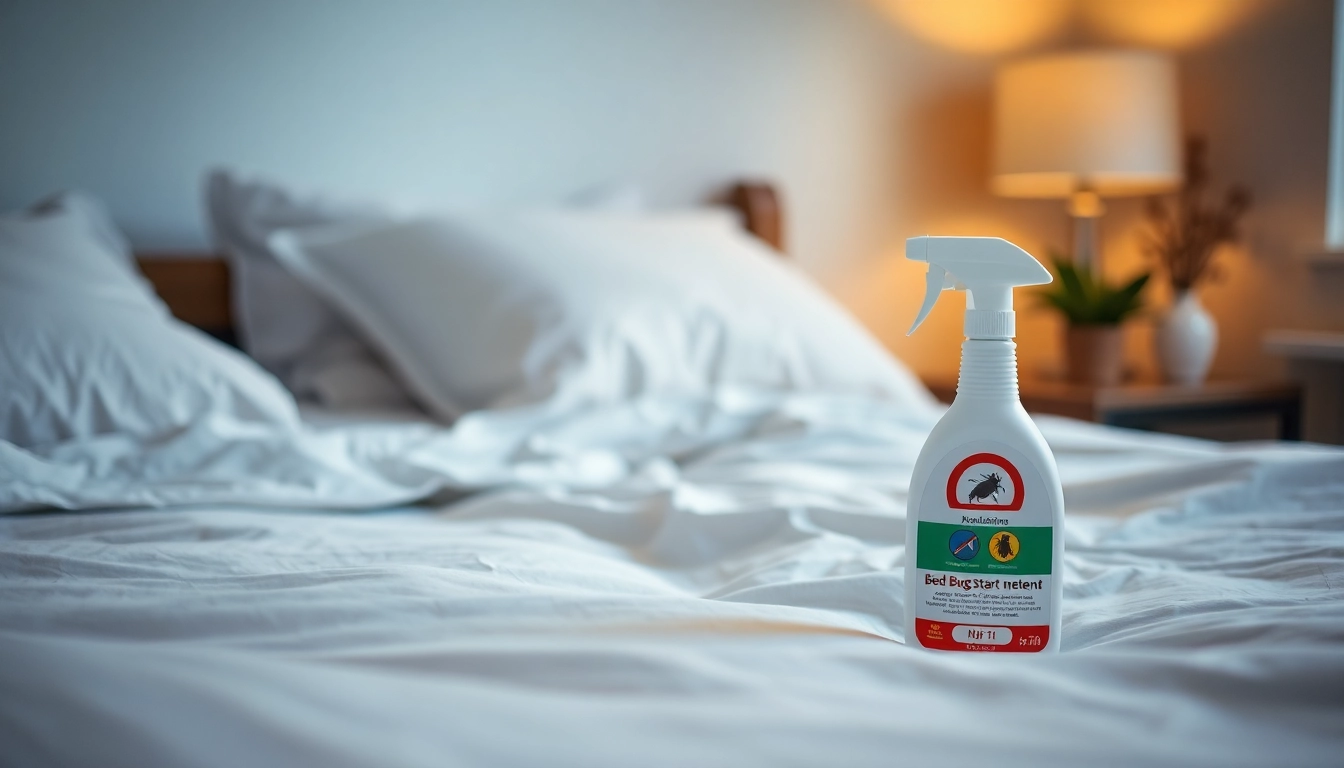Introduction to Bed Bug Removal
Bed bugs are a common household nuisance that can cause discomfort and anxiety. These resilient pests are often hard to spot and can quickly lead to an infestation if not addressed promptly. Effective bed bug removal requires a clear understanding of their behavior, signs of infestation, and various control methods available. This article will guide you through everything you need to know about bed bug removal, including DIY techniques and when to call in the professionals.
What are Bed Bugs?
Bed bugs (Cimex lectularius) are small, flat, reddish-brown insects that feed on the blood of humans and animals. They typically measure between 1 to 7 millimeters in length and are nocturnal, making them even more challenging to detect. Bed bugs do not fly; instead, they crawl quickly and usually hide in cracks and crevices during the day. Common hiding places include mattresses, box springs, bed frames, and even furniture. They are often introduced into homes through travel, clothing, or second-hand furniture.
Signs of a Bed Bug Infestation
Detecting bed bugs early is crucial for effective control. Some common signs of a bed bug infestation include:
- Bites: Red, itchy welts on the skin, often in a line or cluster.
- Stains: Dark spots on bedding or furniture may indicate bed bug excrement.
- Shells: Empty bed bug shells left behind after molting, usually found in hiding spots.
- Musty Odor: A distinct, unpleasant smell can develop in heavily infested areas.
If you notice any of these signs, it is vital to act quickly to prevent the infestation from worsening.
Why Timely Bed Bug Removal is Crucial
Procrastination can exacerbate a bed bug problem and lead to significant challenges in removing them. The quicker you act, the easier it will be to eliminate these pests. A delay can result in:
- Widespread infestation throughout your home.
- Increased stress and anxiety due to discomfort and sleep loss.
- Higher costs associated with more extensive treatments.
Additionally, bed bugs can lead to secondary health problems, such as allergic reactions or secondary infections from scratching their bites.
DIY Bed Bug Removal Techniques
Preparing Your Home for Treatment
Before undertaking any DIY bed bug removal efforts, it’s essential to prepare your home effectively:
- Declutter: Remove any unnecessary items from your living spaces, especially those near where bed bugs have been spotted.
- Wash Bedding: Remove bed linens and clothing, washing them in hot water and drying them on high heat to kill any bed bugs and their eggs.
- Vacuum Thoroughly: Vacuum carpets, rugs, and furniture to remove bed bugs, but make sure to dispose of the vacuum bag outside your home.
Effective Non-Chemical Methods
Several non-chemical methods can effectively reduce or eliminate bed bug populations:
- Steam Treatment: Use a steam cleaner at temperatures of at least 130°F (54°C) to kill bed bugs on contact.
- Diatomaceous Earth: This natural powder can be spread around infested areas. It dehydrates and kills bed bugs when they come into contact with it.
- Encasements: Use mattress and box spring encasements specifically designed to trap bed bugs. This can help isolate them and prevent bites.
Utilizing Heat and Cold Treatment
Another effective DIY strategy for bed bug removal includes using heat or cold to kill these pests:
- Heat: Bed bugs can be killed by temperatures above 115°F (46°C). You can treat smaller items (like clothing) by placing them in a dryer on high heat for about 30 minutes.
- Cold: Conversely, freezing items for four days at a temperature below 0°F (-18°C) can also eliminate bed bugs. Ensure the items are exposed uniformly to the cold.
Professional Bed Bug Removal Solutions
When to Call a Pest Control Expert
DIY methods can be effective for minor infestations, but in some cases, it’s wise to call in the professionals:
- If the infestation is widespread and affects many areas of your home.
- If you’re experiencing severe allergic reactions to bed bug bites.
- When previous DIY efforts have failed to eliminate the problem.
Understanding Different Treatment Options
Professional pest control services offer various treatment options:
- Heat Treatments: Pest control professionals can use specialized equipment to raise the temperature of your home to eliminate bed bugs quickly.
- Insecticides: Licenced applicators may use EPA-approved insecticides, targeting bed bugs while ensuring safety.
- Integrated Pest Management (IPM): This holistic approach combines various treatments, including monitoring, sanitation, and education.
What to Expect from a Professional Service
When you hire a pest control service, you can expect the following:
- Inspection: A thorough inspection of your property to assess the extent of the infestation.
- Treatment Plan: A detailed plan will be provided, outlining the steps to be taken based on the severity of the infestation.
- Follow-Up: Many services include follow-up visits to ensure that the bed bugs have been completely eradicated.
Cost and Considerations for Bed Bug Removal
Average Costs and Budgeting for Treatment
The costs associated with bed bug removal can vary significantly depending on the infestation size and treatment method. On average, professional treatment can range from $300 to $1,500. Here are some factors to consider:
- Extent of Infestation: Larger infestations or those requiring multiple treatments will be more costly.
- Method of Treatment: Heat treatments may command higher fees compared to chemical treatments.
- Location: Prices may vary based on geographical location and market demand.
Evaluating Cost vs. DIY Efforts
When considering treatment methods, weigh the costs of professional services against DIY efforts. DIY removal may appear less expensive initially, but you must consider:
- The potential for needing repeat treatments.
- The inconvenience and time required to address the problem yourself.
- The risks of inadequate treatment leading to a worse infestation.
Long-Term Prevention Expenses
Beyond initial removal costs, consider budgeting for ongoing prevention strategies:
- Regular Inspections: Hiring professionals for routine inspections can catch infestations early.
- Preventative Products: Investing in mattress covers and protective encasements can help ensure your home remains bed bug-free.
- Education: Understanding bed bug behavior and prevention strategies can save you from future infestations.
Final Thoughts on Bed Bug Management
Recap of Key Bed Bug Removal Points
Successfully removing bed bugs requires knowledge, preparedness, and action. Understanding their behavior, recognizing signs of infestation, and being proactive can help mitigate problems quickly and effectively. Whether you choose a DIY approach or hire professionals, acting promptly is essential.
Building a Bed Bug-Free Environment
To create a bed bug-free environment, maintain cleanliness, and regularly inspect your home, especially after travel. Educating yourself and those around you about bed bugs can significantly reduce your chances of future infestations.
Resources for Ongoing Support
For further information on bed bug management, resources such as the U.S. Environmental Protection Agency provide guidelines, tips, and support for homeowners dealing with bed bugs, ensuring you have the right tools for ongoing prevention and management.



